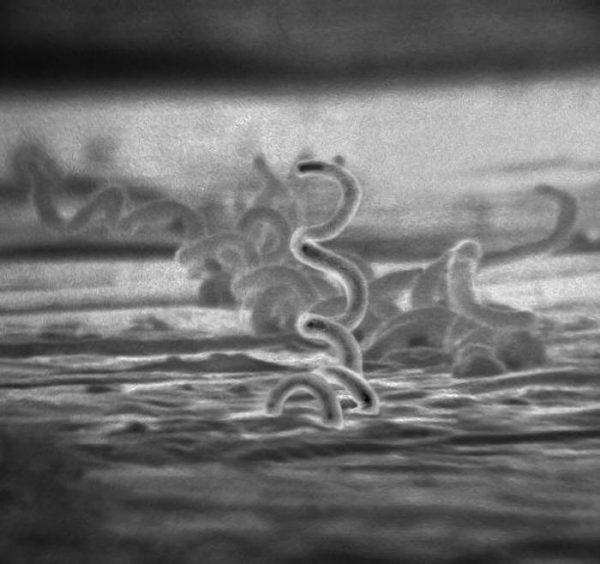
State epidemiologists recently reported the largest number of syphilis cases ever in the state — and their records go back to the ’70s. Nearly 250 people reported syphilis cases in 2019. That’s more than double the cases the year before.
Then came COVID-19.
Alaska ranks among the top quarter of states with STD cases. Its syphilis outbreak began two years ago, and cases continue to rise. Now, public health professionals say the COVID-19 pandemic has been keeping them from getting a handle on the sexually transmitted disease.
“People don’t have stop having sex just because there’s a pandemic going on,” said Susan Jones, a registered nurse and the HIV/STD program manager for the state’s epidemiology department.
“The COVID pandemic, being kind of full scale and operational, interferes with public health ability to respond to the ever increasing number of syphilis cases,” Jones said. “And so the message needs to get out so individuals who are at risk of having syphilis know that they need to go in and get tested and treated.”
She said some people who should get tested may be avoiding clinics and hospitals right now. And public health’s best weapon against syphilis is contact tracing. But lately the department is overwhelmed with COVID-19. Jones’ epidemiology section is now a surge center for COVID-19, so staff that usually work on STDs were fighting the coronavirus. Jones said she had to pull some staff off of pandemic work and back into syphilis prevention.
But she said COVID-19 was not to blame for the spike in cases last year. Federal and state funding for STD prevention has declined.
“I think that the structure of public health has been diminished over the years. If you look at the section of nursing, and the depletion of funds and staff in the section of nursing, that has negatively impacted our ability to control outbreaks,” said Jones.
Syphilis is easily treatable. It’s a bacterial infection usually transmitted by sexual contact. Symptoms can be a painless sore, usually on a mucous membrane like lips or genitals. There’s also usually a rash. But those go away, and some people may not know they have it. But if left untreated, it can affect the heart, brain and other organs.
Syphilis in Alaska cuts across all age groups, from teenagers to senior citizens. Heterosexual people account for most of the cases.
Jones says it’s much harder to do outreach for certain at-risk populations because they don’t see patients in person anymore. A third of last year’s cases also reported using methamphetamine or heroin. A quarter of the people with syphilis had been homeless, and a quarter incarcerated.
“Before we were going out into the field, we were going out to where we could find individuals or places where individuals would hang out and offer like a free outdoor clinic testing clinic in the park or someplace like that. We’ve even gone into homeless camps, and we’re not doing that now. So there may be people that are undiagnosed,” Jones said.
Those undiagnosed people are why her estimate is that this year’s syphilis case count will be even higher. If the current trend continues, she says this year’s count could be closer to 300 cases.
And it’s not just an Alaska problem, although the state does have a high rate of STDs. Combined rates for syphilis, chlamydia and gonorrhea are at an all-time high in the rest of the country too.




